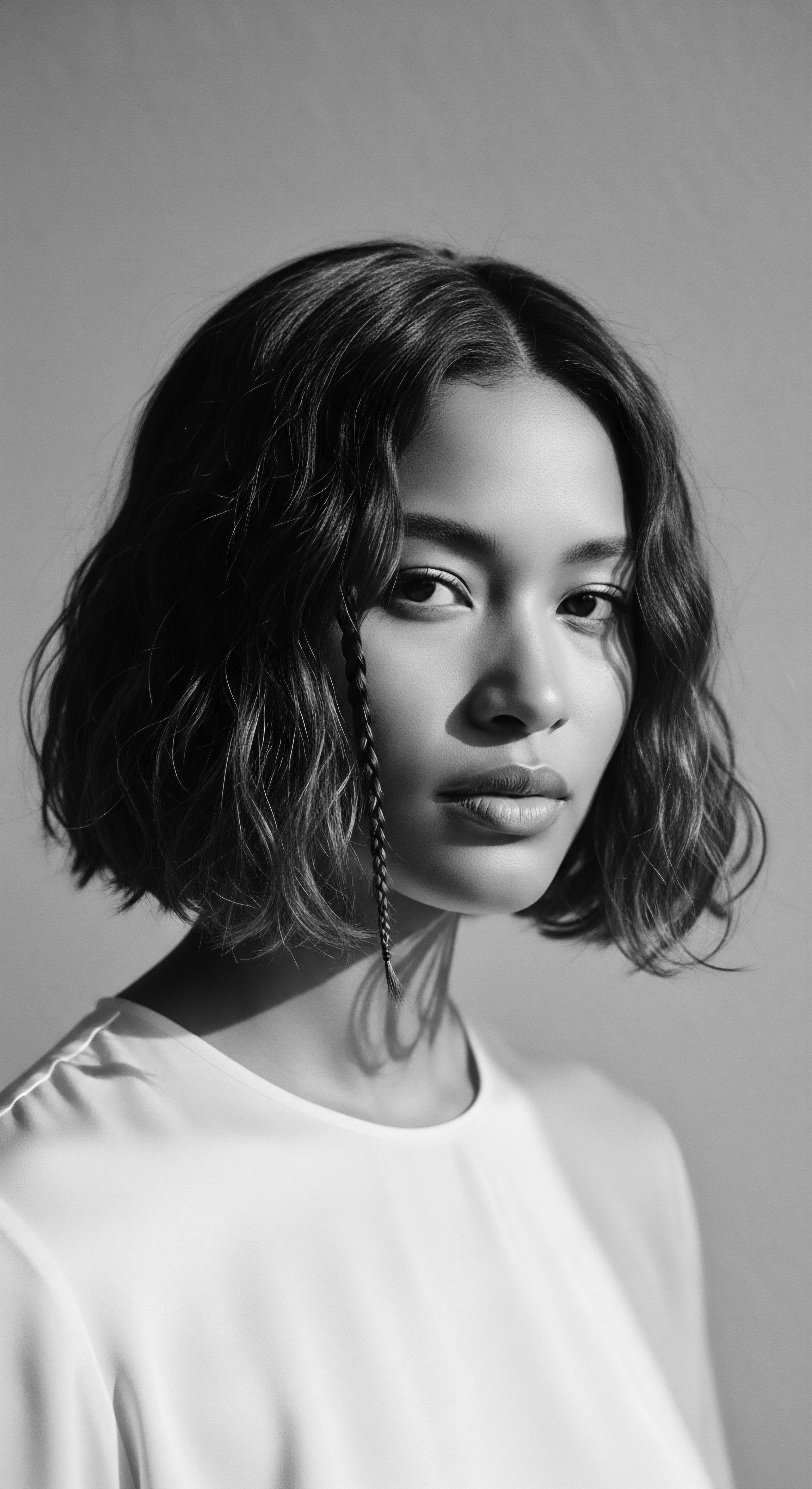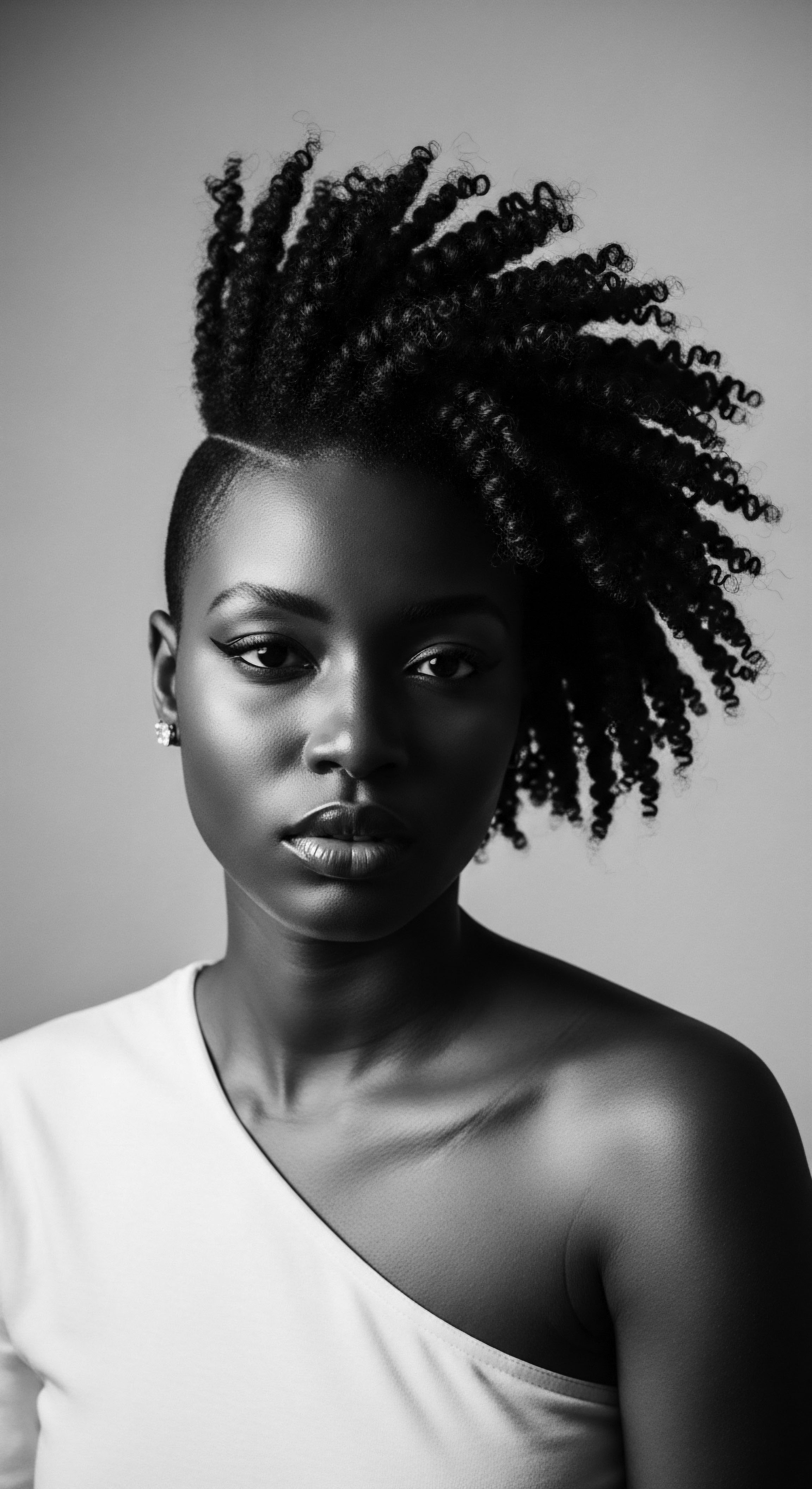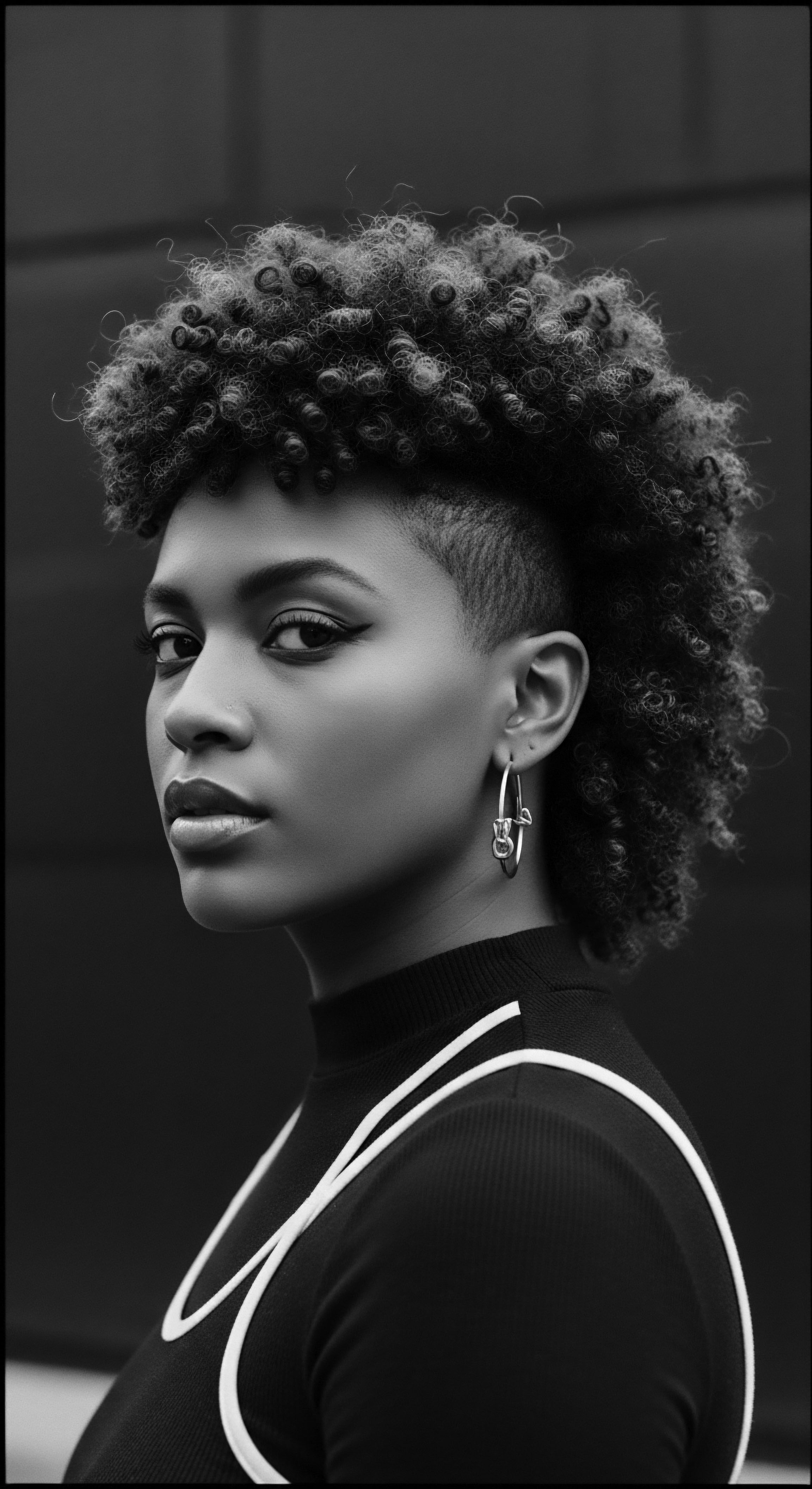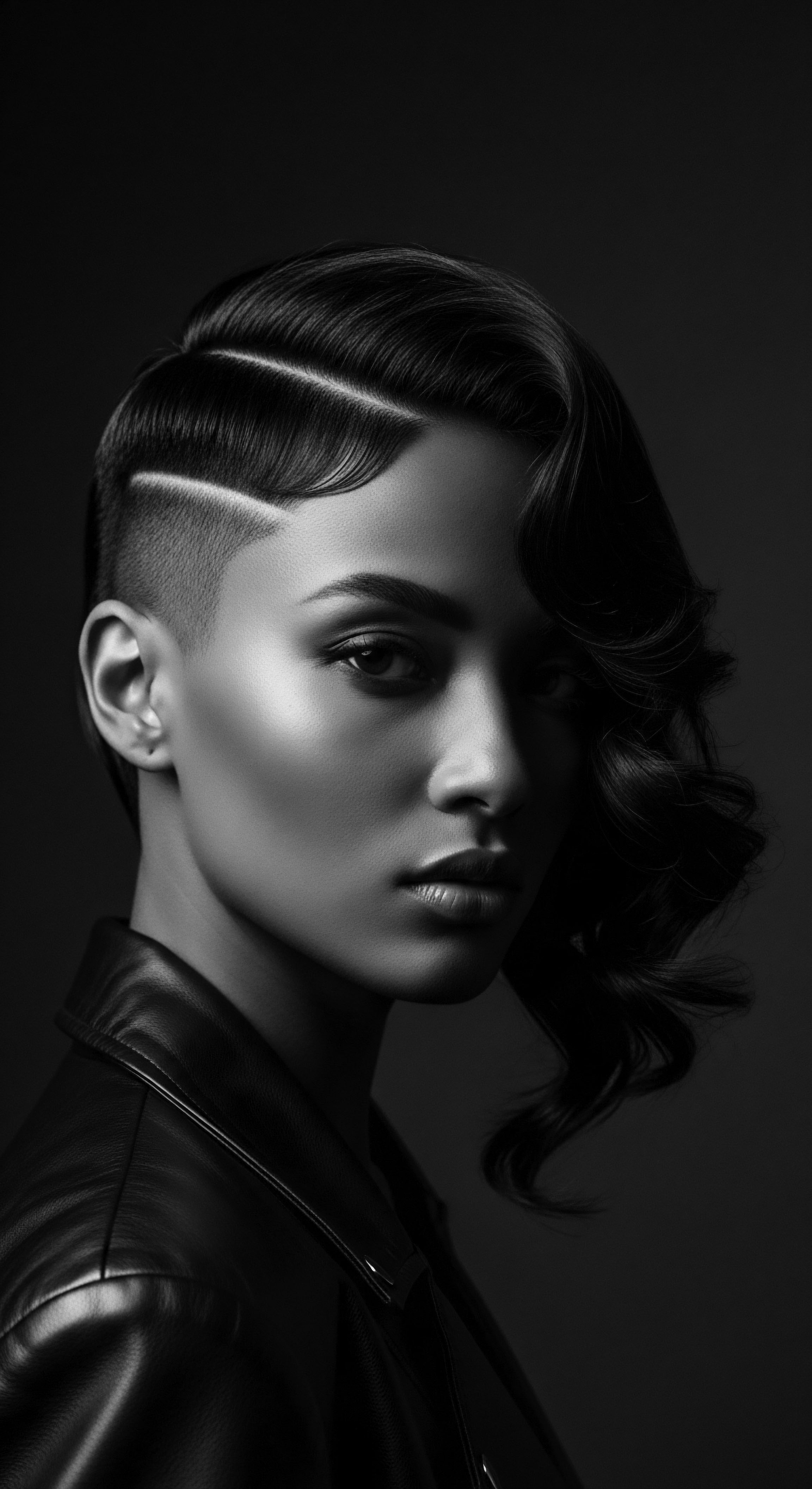
Roots
The story of textured hair, its ancestral legacy, and the oils that have long nourished it, is written not just in ancient texts or oral traditions, but in the very land and sky. For communities across Africa and the global diaspora, the elements—the searing sun, the persistent dry winds, the sudden downpours—shaped a profound wisdom concerning what sustenance the strands truly needed. This understanding, born from observation and passed through generations, guided the choices of plant-based oils and butters, forging a deep link between the environment and personal care practices.
Our exploration journeys back to a time when survival was intimately tied to the land’s generosity. Climate, in its purest form, dictated the bounty of nature, and thus, the ingredients available for hair. The oils selected were never arbitrary; they were a response to specific environmental pressures, a shield against the elements, and a source of strength for hair that evolved to thrive under such conditions.
The inherent structure of textured hair, with its unique elliptical shape and varied curl patterns, offered protection from intense solar radiation by creating a thermal barrier over the scalp, yet this same structure also rendered it more susceptible to moisture loss in arid climates. This biological reality directly influenced traditional care, prioritizing moisture retention and protection through natural emollients.

Hair Anatomy and the Ancestral View
The very fibers of textured hair tell a tale of adaptation. Unlike hair with a round cross-section that grows straight, the highly coiled nature of many Black and mixed-race hair types emerges from an elliptical follicle. This shape causes the hair shaft to twist and turn, forming curls, coils, and kinks.
This structure, while providing a canopy from harsh sun, also means that natural oils from the scalp struggle to travel down the length of the strand. The cuticles, the outer protective layers of the hair, are more exposed along the curves, leading to increased vulnerability to environmental damage and moisture escape.
Ancient communities intuitively understood this. While scientific terms like “cuticle integrity” were not in their lexicon, generations of observation revealed the need for external aid to keep hair supple and resistant to breakage. Their chosen oils provided a literal coating, a vital layer of defense. They recognized that hair, like the land itself, needed nourishment and protection against the vagaries of climate.
The sun, a life-giver for plants, could also be a desiccant for hair. Wind could strip moisture. These were not abstract concepts, but daily realities that shaped practices.

Traditional Classifications and the Land’s Gifts
Traditional classifications of hair were often linked to visual attributes and how well certain preparations interacted with them. The richness of a particular butter, its ability to soften, or how it helped hair retain braids, all played a part. The knowledge was empirical, tested over centuries.
Traditional oil selections were a profound response to specific climates, born from generational wisdom concerning textured hair’s unique needs.
Consider the West African Sahel region, known for its intense dry heat and dusty winds. Here, ingredients like Shea Butter (from the Vitellaria paradoxa tree) became a cornerstone of hair care. This rich fat, extracted from the nuts of the shea tree, offers deep moisturization and forms a protective barrier, exactly what hair needs to combat such environmental aggression. Its traditional use extends beyond aesthetics, often acting as a daily essential for skin and hair in the dry Sahel climate.
In contrast, coastal regions with higher humidity might have relied on lighter oils, perhaps those more readily absorbed without adding excessive weight or stickiness. The direct link between what the land offered and what the hair needed was undeniable.
This is how a vernacular of textured hair began, a language spoken through the application of specific plant extracts, each chosen for its inherent properties and its harmonious relationship with the local climate.

Ritual
The selection and application of oils for textured hair transcended mere functional care. It transformed into a meaningful ritual, a tender act woven into the daily or weekly rhythm of life. These practices, shaped by generations of wisdom and adapted to prevailing climate conditions, became central to the cultural legacy of hair. The oils were not just products; they were conduits of care, connecting individuals to their ancestral roots and strengthening community bonds.
Across various regions of Africa, and subsequently within the diaspora, the communal aspect of hair care became a cherished tradition. Mothers, daughters, and friends often gathered, braiding hair and applying nourishing oils. This process fostered connections while passing on cultural identity. The climate played a direct role in determining the type of styles chosen and the oils that made them possible.

Protective Styles and Environmental Adaptation
In hot, sunny climates, protective styles offered a crucial shield against sun exposure and moisture loss. Braids, twists, and locs were not merely aesthetic choices; they were intelligent responses to environmental demands. These styles minimized direct sun exposure to the scalp and hair strands, simultaneously reducing the surface area from which moisture could evaporate. Oils were essential in preparing the hair for these styles and maintaining their integrity.
For instance, the application of rich butters and oils before braiding served a dual purpose ❉ it softened the hair, making it more pliable for styling, and it created a protective layer that sealed in moisture. The oil would help the style last longer, crucial in environments where frequent washing might strip natural oils. This practical application became an inherited art form, deeply linked to the climate and its influence on hair health.
- Shea Butter ❉ Extracted from nuts found in West and Central Africa, this rich butter offered deep hydration and defense against dry Sahel climates.
- Palm Oil ❉ A versatile oil from the oil palm tree, found in tropical climates, used traditionally for hair conditioning and moisture retention in West Africa.
- Castor Oil ❉ A thick, moisturizing oil used in ancient Egypt and indigenous cultures for scalp care, believed to strengthen and promote hair growth.

Traditional Methods and the Role of Oils
The practice of applying oils often involved warm massages, believed to stimulate the scalp and distribute the oil evenly. This ritual not only provided physical benefits but also contributed to a sense of well-being and community. The selection of a particular oil was influenced by its availability, its observed effects, and its efficacy in the local climate.
| Traditional Oil/Butter Shea Butter |
| Predominant Climate Dry, Arid (Sahel) |
| Hair Benefit/Environmental Defense Deep moisture, protective barrier against wind and sun. |
| Traditional Oil/Butter Palm Oil |
| Predominant Climate Humid, Tropical |
| Hair Benefit/Environmental Defense Moisture retention, conditioning for dense hair. |
| Traditional Oil/Butter Argan Oil |
| Predominant Climate Semi-arid (Morocco) |
| Hair Benefit/Environmental Defense Antioxidant properties, conditioning, protection from heat. |
| Traditional Oil/Butter Castor Oil |
| Predominant Climate Various, including hot desert |
| Hair Benefit/Environmental Defense Strengthening, moisture seal, scalp health. |
| Traditional Oil/Butter These ancestral choices show a deep understanding of environmental impact on hair health. |
The Himba tribe in Namibia, for instance, uses a mixture of red clay and cow fat, a tradition shaped by their dry, hot environment. This paste provides protection from the sun and aids in detangling, showcasing a practical response to climatic conditions. The choice of animal fat, readily available in their pastoral society, highlights the ingenious adaptation to local resources and environmental challenges.
Rituals surrounding hair oil application were not simply acts of care; they were acts of resistance, adaptation, and cultural preservation against environmental and historical challenges.
As populations migrated, these practices adapted. African immigrants moving to colder European climates found their moisture retention routines, heavy with oils and leave-in conditioners, became even more essential for protecting hair against harsh, dry air. This adaptability underscores the enduring wisdom embedded in these ancestral practices.

Relay
The transmission of knowledge concerning climate’s bearing on traditional oil selections within textured hair heritage represents a profound relay across generations and geographies. This is not merely a passing down of recipes; it is the enduring legacy of a nuanced environmental science, a deep cultural understanding, and a resilient human spirit. The selection of specific oils was an intricate dance between the local ecology, the properties of textured hair, and the communal practices that held these traditions sacred.
The underlying wisdom in traditional oil choices often finds validation in contemporary scientific understanding. The fatty acid profiles of certain plant oils, their molecular structure, and their ability to penetrate or coat the hair shaft correlate directly with the environmental challenges they were chosen to address. For instance, the prevalence of saturated fatty acids in oils like coconut oil allows them to penetrate the hair shaft more effectively, reducing protein loss from washing and helping to seal moisture, a benefit in both humid and dry conditions.

How Did Arid Climates Shape Oil Choices for Textured Hair?
In the arid and semi-arid regions of Africa, where relentless sun and dry winds prevail, the selection of heavy, occlusive oils and butters was a clear environmental adaptation. Shea butter, a prime example, comes from the shea tree, native to the Sahel region. Its composition, rich in vitamins A and E and with natural anti-inflammatory qualities, makes it a potent moisturizer and skin protectant. For hair, it provides a substantive barrier that locks in moisture, preventing the desiccation that harsh dry air causes.
The historical use of shea butter goes back centuries, perhaps millennia, in West Africa, where it was essential for personal care and for treating wounds, protecting skin from desert sun. This widespread, intergenerational use highlights how communities observed, experimented, and codified their traditional pharmacopoeia in direct response to their environment. The resilience of the shea tree itself, capable of enduring extreme heat and providing soil stabilization, mirrors the resilience it imparts to hair.

What Role Did Local Ecosystems Play in Traditional Oil Accessibility?
The very availability of certain plants dictated the local oil choices. Communities did not import vast quantities of oils from distant lands; they relied on what their immediate environment provided. This localized sourcing strengthened community ties and fostered a reciprocal relationship with the land.
For example, in parts of West Africa, the oil palm (Elaeis guineensis) thrives in moist, tropical climates. Palm oil, extracted from its fruit, has long been a staple, valued for its moisturizing and conditioning properties, making it a valuable addition to hair and skin care. Its abundance in these regions made it a natural choice for regular application, supporting hair health in a humid environment where excessive dryness might not be the primary concern, but maintaining suppleness and strength certainly was.
The research by Daphne Gallagher’s team at Kirikongo in western Burkina Faso indicates the long history of people nurturing shea trees, dating back 1,000 years earlier than previously assumed, demonstrating its sustained importance as a resource. This specific example illustrates how a plant, suited to a particular climate, became culturally integrated into the daily lives and care practices of a people for over a millennium. The careful cultivation and processing of these natural resources were intertwined with agricultural practices, reflecting sustainable methods adapted to the shifting climate of the Sahel region.
- Moringa Oil ❉ A light oil from the Moringa tree, noted for antioxidants, used in parts of Africa for hair and skin.
- Yangu Oil ❉ Also called Cape Chestnut Oil, a traditional African ingredient used to condition hair and skin, providing protection from harsh winds and dry climates.
- Baobab Oil ❉ Extracted from the majestic Baobab tree, rich in essential fatty acids, used for moisturizing skin and hair, and improving elasticity in dry climates.
- Marula Oil ❉ From Southern Africa, high in fatty acids and antioxidants, beneficial for dry skin and hair in arid conditions.
This interplay between local climate, plant availability, and the specific needs of textured hair created a practical ethnobotanical science. It was a science not always codified in written texts, but in the hands that harvested, processed, and applied the oils, in the communal wisdom passed down through generations, and in the very resilience of the hair itself. The ancestral ingenuity in adapting to environmental conditions, using the gifts of the land to maintain hair health, provides a powerful lesson for contemporary care, urging a re-engagement with these deep ecological connections.
The generational wisdom in choosing oils for textured hair reveals an intricate interplay between local ecology, hair biology, and collective cultural practices.

Reflection
The story of climate’s influence on traditional oil choices for textured hair is a testament to the enduring wisdom held within our heritage. It speaks of a time when our ancestors lived in profound attunement with the land, understanding its rhythms and drawing forth its sustenance to nourish their bodies and their hair. This ancestral knowledge is not a relic of the past; it is a living archive, a continuous source of understanding that resonates with Roothea’s ‘Soul of a Strand’ ethos.
Each drop of oil, each hand that applied it, carried with it generations of observation, adaptation, and reverence. The robust shea butter, a shield against the Sahel’s dry embrace, and the nurturing palm oil from humid coasts—these were not mere commodities. They were expressions of ingenious survival, acts of care rooted in a deep respect for the environment and the unique beauty of textured hair. Our journey through these historical practices reminds us that hair care, for Black and mixed-race communities, has always been more than cosmetic; it is a cultural anchor, a site of identity, and a symbol of resilience.
In every curl, coil, and kink, we find echoes of these ancient practices, a reminder of the strength and adaptability inherited through lineage. The continuity of these traditions, even as they traversed oceans and adapted to new climates, stands as a powerful declaration of cultural survival. Our present understanding of hair biology and environmental science often serves to affirm the wisdom of those who came before us, bridging ancient intuition with modern discovery. The legacy of these traditional oil choices invites us to approach our hair with similar intentionality, recognizing its inherent value, and honoring the collective knowledge that has sustained it through time.

References
- Byrd, A. S. (2001). Hair Story ❉ Untangling the Roots of Black Hair in America. St. Martin’s Press.
- Kedi, C. (2014). Beautifying the Body in Ancient Africa and Today. Books of Africa.
- Kinard, T. (1997). No Lye ❉ The African American Woman’s Guide to Naturally Healthy Hair. St. Martin’s Press.
- Mensah, C. (2020). Good Hair ❉ The Essential Guide to Afro, Textured and Curly Hair. Penguin Life.
- Rosado, R. (2003). The Grammar of Hair ❉ Hair as a Site of Diasporic Transindividuation. York University.
- Warner-Lewis, M. (1991). Guinea’s Other Suns ❉ The African Dynamic in Trinidad Culture. Majority Press.
- Gallagher, D. (2016). Researchers get lathered up over Shea butter’s history. Journal of Ethnobiology.
